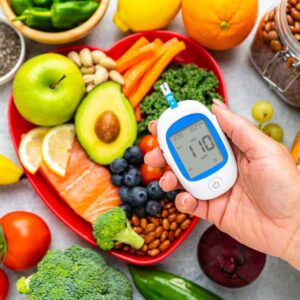
The EPA Says This Carcinogen Is Perfectly Safe
Dear Reader,
Like most Americans, chances are there is a bounty of toxins in your garage or shed. Antifreeze, gasoline, motor oil, paint thinner… just to name a few.
Let’s face it– chemicals are a nasty necessity of modern life.
But, you would never mix brake fluid into your soup or marinate your Sunday afternoon steaks in diesel fuel.
So how is it that over 80 percent of food in this country contains ingredients doused in poison? 1
It’s simple–this cancer accelerant that you have in your garage is used on 93 percent of corn and 94 percent of soy crops grown in America.1
And corn and soy are in everything. Cereals, granola bars, cooking oils, “healthy” processed snacks….
We all try to be vigilant about the ingredients in our foods, but life gets busy and expensive-sometimes we have to take shortcuts.
Does that mean we should be eating carcinogens or feeding them to our families?
No, but it seems that our food supply isn’t lending us many alternatives to these cancer laced crops.
Besides….the hard working scientist at the EPA say this product is totally food safe.
Yet, studies have also shown this toxic herbicide is associated with cancer, digestive disorders (celiac disease and irritable bowel syndrome to name a couple), autism, obesity, Alzheimer’s disease, Parkinson’s disease, infertility, and depression.5
So what is this killer cocktail?
Monsanto’s Roundup, of course. The most commonly used herbicide in the world.3
Wait… Digestive disorders, obesity, Alzheimer’s… sounds like the negative health outcomes associated with GMOs. Coincidence?
Monsanto did themselves a favor by creating Roundup-ready crops (genetically modified seeds that are resistant to Roundup).
Basically, food crops can be doused in gallons of Roundup without being ruined– yet Roundup will kill any weed around.
In fact, after their 2013 study, Thomas Bohn and Marek Cuhra reported:
“We tested these samples for nutrients and other compounds as well as relevant pesticides, including glyphosate (the active ingredient in Roundup) and its principal breakdown product, aminomethylphosphonic acid (AMPA). All of the individual samples of GM soy contained residues of both glyphosate and AMPA, on average 9.0 mg/kg. This amount is greater than is typical for many vitamins. In contrast, no sample from the conventional or the organic soybeans showed residues of these chemicals”
Greater than the typical amount of vitamins? Yikes!
What’s more alarming– glyphosate is less destructive in its pure form than it is as the Roundup mixture available at your local hardware or big-box store.4
That’s right… it is less toxic as a single ingredient.
It’s the lethal combination of ingredients in this herbicide that makes it 125 percent more hazardous to your health than an unadulterated dose of the main active ingredient.1 The added surfactants (emulsifiers) and adjuvants (potency accelerators) that make it more deadly are listed as “inerts” by the manufacturer. And there is no information or testing for adverse health effects available.4
Roundup in Your Food- EPA Says It’s Safe
A report by the World Health Organization’s cancer agency, the International Agency for Research on Cancer (IARC) classified glyphosate a probable human carcinogen earlier this year.
The EPA says glyphosate is totally safe and doesn’t even list cancer as a health effect.
Huh?
A global health authority reports Roundup as a probable cancer agent and the EPA reports it’s safe?
In fact, in their fact sheet for glyphosate, the only suggestion they offer to reduce levels of glyphosate in drinking water is to use a water filter.
The EPA says glyphosate “tends to adhere to sediments” and “does not tend to build up in aquatic life.” Sounds like really good science.
Such widespread usage creates an opportunity for Roundup to invade our surface waters. Run off from yards, farms, golf courses and any other green space inevitably ends up in our lakes, streams, and oceans– exposing fish and other food sources to this toxic nightmare.
One study showed that fish exposed to glyphosate presented gastric symptoms that mimic those of celiac disease in humans.3
If these EPA reported “tendencies” of glyphosate are so factual, why are fish being affected by it?
Maybe these fish don’t have a water filter…
And what about those mysterious “inerts” that increase negative health affects? Why hasn’t the EPA made Monsanto identify these chemicals? Where do they go in the environment?
Don’t think this applies to you because you choose organic produce and eat grass-fed and free-range meat?
I bet it does.
The famer of your produce or livestock may not use Roundup, but their farming neighbor might.
Even a farmer or suburban gardener hundreds of miles away might be inadvertently putting your family at risk.
Roundup lingers around in soil for about 60 days after its use. This means, every time you use Roundup, it will take about two months for it to be out of the environment.
Unfortunately, farmers and most residential gardeners use it more frequently than every 60 days- this means the exposure is constant. Rains, flash flood, and even normal weather and surface water patterns can quickly filter this poison to pastures and crops far away from the site of origin.
That means those free-ranged animals in your lunch likely had a dose of this toxin with their lunch.
Bringing It Home
Round up is a common household product. I bet if you don’t have it in your garage or shed right now, someone you know, like millions of unassuming consumers worldwide, certainly does. You, your family, your friends, and your neighbors have all probably used this product many times.
Now that you know the potential dangers of Roundup, you might be wondering how to get rid of it.
It’s fairly simple to dispose of Roundup safely….
If you have empty bottles, you can place them in the trash. They must be completely EMPTY and should NEVER go in with the recycling. Plastics are contaminated with the herbicide and should not be put back into the consumer market.
For bottles with product in them, you can call your local waste management services and request a hazardous pick up date or a hazardous drop-off location.
NEVER put Roundup down the drain or toilet. There is already enough in our drinking water. No need to further the contamination.
While you have no control over how others uses this product, you can protect yourself and your home garden from this toxic potion. It is surprisingly easy and cost-effective to rid your garden of weeds without the use of Roundup.
Here are a few simple and natural solutions to sort out your unwanted plant guests:
Pull them — By ripping the root system out of the soil, you are destroying the plants life line. It is the safest and most effective way to destroy weeds. Though, I will warn you, when it comes to dandelions or any other weed with a taproot, it will take some effort to rid your garden of them completely using this method.
Boiling water— Boil a large pot of tap water and douse down those sidewalks and flower beds. The heat from the water will wilt the leaves and stems and kill the plant. Watch where you’re dousing though, hot water will kill any plant it comes into contact with.
Vinegar— Spray down leaves with pure white vinegar and watch the weed wither away. This may take a few applications, but you will see results. You can add a few squirts of dishwashing liquid to increase the potency. Be sure to only spray only the leaves of unwanted plants and to avoid soil contamination.
Salt— Dilute one part salt with eight parts water in a spray bottle. Spray this solution on to the leaves of weeds only! Be careful not to get this salty solution on the soil. Salt in the soil will prevent any plants from growing.
If you are an apartment dweller like myself or just don’t have a home garden, you can lower your exposure to glyphosate by eating an organic diet when available, and always to be sure to wash your produce, organic or not– this stuff is everywhere.
For more information on glyphosate, or if you are interested in testing the levels of this cancer creator in your body, water or food- you can do so at detoxproject.org.
They offer testing of levels glyphosate in urine, breast milk, and drinking water for a fee. They will have food testing available soon. In addition to the testing, they offer detox suggestions.
If you have any food concerns or other health issue you would like us to discuss. Let us know- we would love to hear from you!
Live Well,

Natalie Moore
Managing editor, Living Well Daily
[1] http://www.ers.usda.gov/data-products/adoption-of-genetically-engineered-crops-in-the-us/recent-trends-in-ge-adoption.aspx
[2] http://www.epa.gov/safewater/pdfs/factsheets/soc/tech/glyphosa.pdf
[3] Samsel A, Seneff S. Glyphosate, pathways to modern diseases II: Celiac sprue and gluten intolerance. Interdisciplinary Toxicology. 2013;6(4):159-184. doi:10.2478/intox-2013-0026.
[4] Mesnage R, Defarge N, Spiroux de Vendômois J, Séralini G-E. Major Pesticides Are More Toxic to Human Cells Than Their Declared Active Principles. BioMed Research International. 2014;2014:179691. doi:10.1155/2014/179691.
[5] Samsel A, Seneff S. Glyphosate, pathways to modern diseases III: Manganese, neurological diseases, and associated pathologies. Surgical Neurology International. 2015;6:45. doi:10.4103/2152-7806.153876.
Written By Natalie Moore
Natalie Moore is a dedicated health researcher with a passion for finding healthy, natural, and science-based solutions. After a decade of direct healthcare experience in western and natural medicine, she was involved in public health research before joining Living Well Daily.
View More Free Articles
Stop Obsessing Over Diet Trends
Can we stop with the endless diet debates already? Every other week there’s a new headline shouting about which diet is best for weight loss, heart health, or diabetes. Paleo, keto, low-carb, high-protein… it’s exhausting. And now, a new meta-analysis is out comparing the Mediterranean diet, the DASH diet, and something called AHEI (that’s “Alternative...
A New Reason to Ditch Processed Junk
If you’ve ever walked the inside aisles of your local grocery store and thought, “This is all just junk,” your instincts were spot on. A new study published in the journal Thorax just added another red flag to the list of dangers linked to ultra-processed food—a 41 percent higher risk of lung cancer. That’s right....
When Being Winded on Stairs Is Serious (And When It Isn’t)
I had an athlete visit me recently because he experienced shortness of breath while climbing stairs. He is in great shape, so he was worried about what it might mean. “Doc,” he said, “I run five miles three times a week. Why am I huffing and puffing after two flights of stairs?” His concern is...
Study EXPOSES Hidden Danger Lurking in Your Car
We think of our homes and cars as safe havens. But according to a startling new study, they may be flooding your lungs with microscopic plastic particles—every single day. Researchers in France recently found that adults inhale an average of 68,000 microplastic particles daily from indoor air alone. To put that in perspective, that’s about...
Mailbag: Is Modern Food Making You Snore?
“What can cause snoring, and is there a way to correct this issue?” —Seeking Silence Hi Seeking, Snoring happens when the soft tissues in your throat relax and vibrate as air passes through during sleep. While several factors can cause snoring—from sleep position to nasal congestion—I want to share one trigger that might surprise you....
Simple Food Swap SLASHES Dementia Risk 28%
Let’s be honest… who would jump at the chance to cut their dementia risk by 28 percent. And no, you don’t need to run marathons, survive on broccoli, or learn to play the zither (whatever that is) to make it happen. All it takes is one easy swap—something that’s probably already in your refrigerator. Researchers...
This SMART Floss Exposes Hidden Health Danger
Scientists have created dental floss that doesn’t just clean between your teeth—it also tracks your stress while you’re flossing. Now, I know what you’re thinking… “Great—now even flossing is going to stress me out by telling me how stressed I am.” But this fascinating new tool from Tufts University could be a game-changer for understanding...
Is This "Safe" Sweetener Damaging Your Brain?
The headlines are alarming… “Popular Sugar Substitute Linked to Brain Cell Damage” and “Erythritol Could Damage Critical Brain Barrier” are just two of the dozens I’ve spotted recently. But before you toss every sugar-free product in your pantry, let’s take a closer look at what this study actually shows—and what it doesn’t. The latest research...
This Summer Threat Could SPIKE Your Blood Sugar
Picture this… It’s another scorching hot summer day. You crank up the air conditioning while watching the weather forecast, which predicts yet another “record-breaking” heat wave. It’s starting to feel like just another miserably uncomfortable summer. But what you might not realize is that—if you have diabetes—those rising temps could do far more damage to...
Move Over Yogurt—5 Foods That Pack MORE Probiotics
Let’s talk about your gut. The microbiome is the collection of trillions of bacteria and other tiny organisms that live in and on your body—especially in your gut—and help keep you healthy. I’ve written often about how vital it is to maintain a healthy microbiome. And you might have dutifully added yogurt to your shopping...









